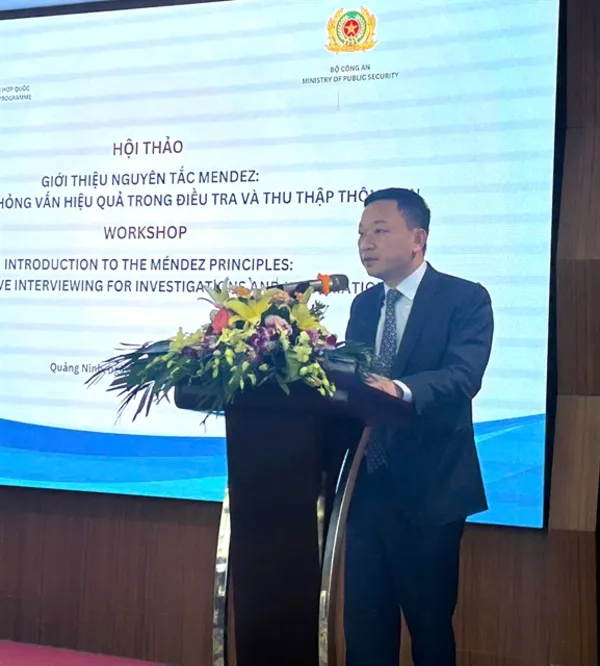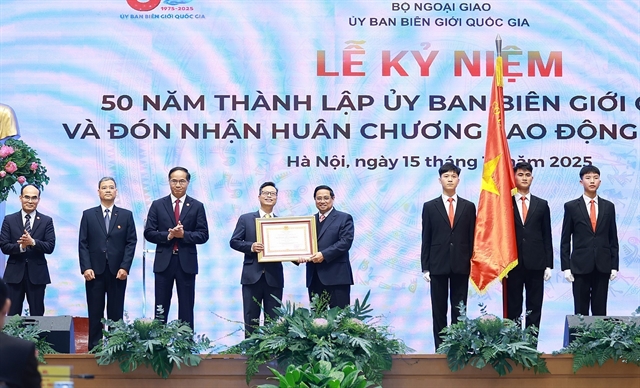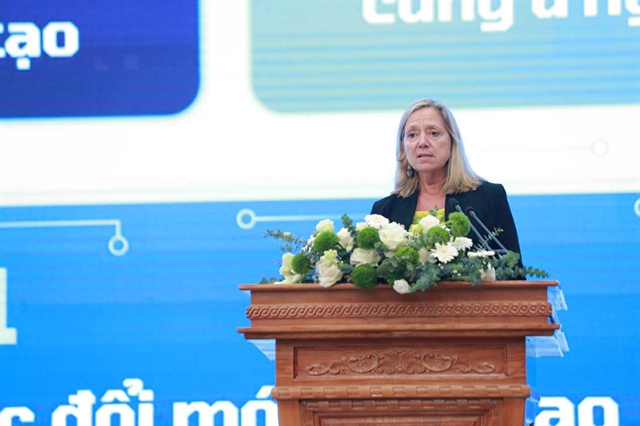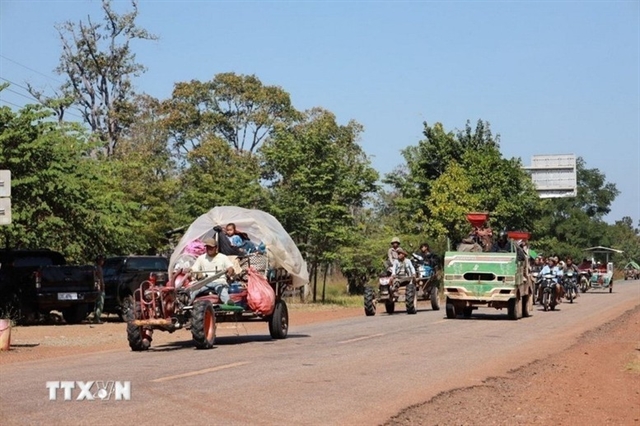 Opinion
Opinion

 |
| World Bank Division Director for Việt Nam, Cambodia and Lao PDR, Mariam J. Sherman. Photo courtesy of National Innovation Center |
Mariam J. Sherman*
Science, technology and innovation will shape Việt Nam’s future, its standing in the world, and the lives of its people for decades to come. The nation stands at a pivotal moment, armed with landmark reforms and a clear determination to carve out its place as a high-tech powerhouse. The question is no longer if Việt Nam should pursue this path, but how it can win the global race for talent and technology.
Việt Nam enters this race with real advantages: a young, talented workforce eager to learn; hard-won macroeconomic stability; a strategic location in Asia’s most dynamic growth corridor; and a proven ability to adapt and overcome. What is needed now is not just ambition, but an actionable strategy.
Drawing on global experience, we propose a 'three-plus-one' formula, detailed in the World Bank’s new report, Forging Việt Nam's Semiconductor Future: Talent and Innovation Leading the Way. This framework rests on three core pillars - talent, an innovation ecosystem and supply chain linkages - bound together by one crucial element: a sharp focus on a few, targeted clusters of innovation excellence.
The first pillar: a deep reservoir of talent
The bedrock of any high-tech ambition is its people: skilled workers, top-tier researchers and visionary technopreneurs. To compete globally, Việt Nam needs not only more graduates but also more technicians, scientists and engineers trained at advanced, world-class levels. This requires building bigger, better talent pipelines. Universities need significant investment to raise both the quantity and quality of undergraduate and postgraduate training, empowering faculty and students to conduct cutting-edge research and gain relevant industry experience.
Vocational colleges are just as crucial. They must be at the center of talent development, co-designing training programmes directly with firms to supply the skilled technicians that high-tech industries depend on.
However, developing talent is only half the battle; attracting and retaining it is the other. Nearly 65 per cent of Việt Nam’s top tech talent in critical and emerging technologies currently work overseas. This is not a loss, but a latent opportunity. Creating the right conditions for this diaspora to return and thrive can close knowledge and network gaps that might otherwise take decades to fill. Investing in people is the fundamental first step.
The second pillar: a thriving innovation ecosystem
The second pillar is building an ecosystem where research can flourish, ideas can move from the lab to the market, and startups can scale into homegrown unicorns. This requires a 'triple helix' partnership that tightly weaves together academia, government, and industry.
Việt Nam has laid important groundwork. In 2025, it ranks an impressive 44th on the Global Innovation Index, and Hồ Chí Minh City is already one of Southeast Asia’s most dynamic innovation hubs. Yet, higher-value work - like product design, engineering, and commercialising research - is still in its infancy. From 2010 to 2020, Việt Nam filed fewer than 100 patents in the top five international patent offices, with virtually none in semiconductors. This is where the greatest opportunity for growth lies.
Boosting public and private investment in R&D infrastructure is critical. For semiconductors, we call for urgent investment in national semiconductor R&D hubs - world-class facilities where universities, researchers, and startups can share access to high-performance computing, advanced design tools and services to prototype and test chip designs. These hubs accelerate innovation and give students and scientists the hands-on experience needed to turn brilliant designs into reality.
The third pillar: forging deeper supply chain linkages
The third pillar focuses on deepening the ties between Việt Nam’s domestic companies and major foreign-invested (FDI) firms. The goal is straightforward: help Vietnamese enterprises capture more value by evolving from simple suppliers into trusted co-innovators and long-term partners of multinationals.
To accelerate this, we propose a collaborative partnership model where FDI firms, local companies, and the government co-invest to upgrade the capabilities of local firms. This approach is grounded in proven successes. In Singapore, a government partnership matches multinational spending to lift SME suppliers through joint R&D. In Ireland, a national scheme pairs global buyers with local firms and co-finances upgrades.
In Việt Nam, this could take the form of an FDI firm mentoring local SMEs to meet global standards, with government funding tied to results. It could also back joint projects to test prototypes or localise key components, creating direct entry points into a multinational’s production cycle. The payoff is clear: knowledge is anchored in Việt Nam, local companies win more business, and a generation of highly skilled talent is built and retained.
The ‘plus one’: the power of focus
Finally, the ‘plus one’ that ties it all together is a relentless focus on a few well-chosen clusters of innovation excellence. Look at our neighbours: China has the Shenzhen-Hong Kong-Guangzhou corridor, the Republic of Korea has its Daedeok Science Town, and Singapore has dedicated innovation districts. Their common feature is a high concentration of universities, R&D institutes and high-tech firms in one geographic area.
Imagine Saigon High Tech Park and Hòa Lạc High Tech Park ten years from now as the heart of an innovation cluster for advanced manufacturing - semiconductors, biomedicine and robotics. These could be ecosystems where the entire journey, from training and R&D to prototyping and full-scale production, happens in one place. Such clusters are powerful magnets for talent and ideas, inspiring young people to pursue careers in science and attracting the global Vietnamese diaspora home.
This journey requires a whole-of-nation effort. The government sets the vision, businesses drive innovation, universities cultivate talent, and international partners like the World Bank can bring global expertise and financing.
Việt Nam’s development story has always been one of resilience and ambition. The next chapter - a high-tech future built on homegrown innovation - is within reach. This future becomes real when we turn vision into action, starting now. VNS
*Mariam J. Sherman is the World Bank Division Director for Viet Nam, Cambodia and Lao PDR




